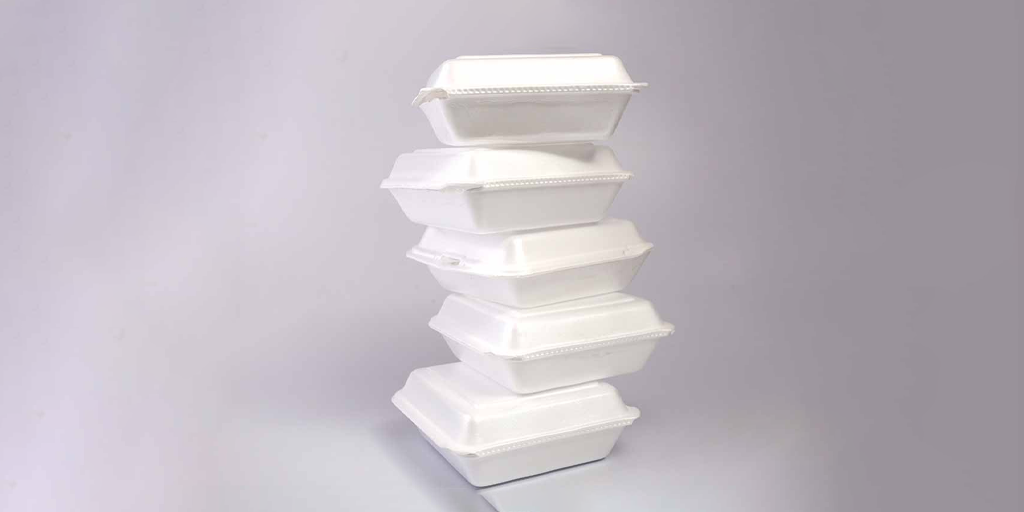The Styrofoam cooler, made from expanded polystyrene (EPS), is popular. It keeps food and drinks cool. It’s light, cheap, and ideal for picnics, camping, and grocery transport. EPS’s structure traps air, providing excellent insulation. This keeps ice from melting and items cool for hours. Its low price makes it appealing for temporary needs; however, Styrofoam coolers have downsides. They’re not very durable and harm the environment. Styrofoam is fragile, easily cracking or breaking under pressure. It’s also non-biodegradable and hard to recycle. This leads to pollution and risks to wildlife. As awareness of these issues grows, the demand for better options increases. There is a demand for alternatives, like biodegradable coolers and better recycling.
Table of Contents
ToggleReasons behind the styrofoam packaging ban
The U.S. is banning Styrofoam (polystyrene foam) products due to their environmental and health impacts. Styrofoam is non-biodegradable and takes hundreds of years to break down. This has a major impact on pollution, particularly in oceans. Marine animals often confuse it with food. They ingest it and harm themselves. Researchers have linked styrene, a chemical in Styrofoam, to cancer. Cities and states like New York and California have banned certain items to reduce waste. They promote alternatives such as biodegradable packaging. The bans target single-use plastics to tackle the plastic waste crisis. Local governments urge businesses to adopt sustainable materials. This effort helps protect the environment and public health.
Top 5 Polystyrene Manufacturers
- Polystyrene Foam Products
Foam Products Corp. was founded in 1978 in Calhoun, Georgia. It also offers double-stick carpet cushions for the commercial and hospitality sectors. It also provides wood wall planks, kitchen backsplashes, breathable waterproof films, coated fabrics, and cushioning products. It serves the medical, aerospace, consumer goods, industrial, and construction sectors.
- Michigan Foam Products
This foam is made from styrene, vital for polyester and EPS. The company offers a variety of rigid EPS packaging and projects. These cater to commercial, residential, civil, and government needs. Its main goal is to provide cushioning with EPS foam. The company ensures high quality and offers solutions for different industries and needs.
- Foamcraft USA, LLC
Foamcraft USA, LLC, founded in 1962, bases itself in Chicago. It uses modern technology to create various foam products. These include EVA foams, neoprene foam, and sponge rubber. The company also provides services like prototyping, case inserts, and packaging. It also offers several cutting methods: die, contour, and kiss c
- Chi Mei Corp.
Its products include LCD panels, optical films, and specialty chemicals. These sectors use these materials in electronics, automotive, and construction. Electronics, car interiors, and medical devices use Chimei’s plastics. In 2021, it won the Taiwan Corporate Sustainability Award for its ESG practices.
- Syndiotactic Polystyrene
Idemitsu Kosan Co., Ltd., founded in 1911 in Tokyo, Japan, is a key player in the energy and chemicals sector. It offers products like petroleum, lubricants, and petrochemicals. Not possible to remove the adverb. It plans to boost energy efficiency and reduce pollution. This effort will benefit customers and the planet.
How much loss to bear After Ban of Styrofoam manufacturers
Banning Styrofoam packaging hits some industries hard. This includes food, electronics, and fragile items. Styrofoam, or EPS, is popular. It’s light, cheap, and insulating. However, growing environmental concerns and bans are raising costs. Companies must now switch to pricier, eco-friendly options like biodegradable or paper packaging. These alternatives are bulkier and heavier, increasing shipping and storage costs. Small businesses, lacking the resources of larger ones, feel this burden the most. Moreover, getting rid of non-recyclable Styrofoam adds to waste management costs. This pushes companies to seek alternatives, even if it means short-term losses.
Environmental Impact of Styrofoam Coolers
Styrofoam coolers significantly harm the environment. Each year, a lot of EPS foam waste piles up. Styrofoam doesn’t break down easily. It can linger in the environment for centuries. Being lightweight, Styrofoam is easily blown away. It often ends up in waterways and oceans, threatening marine life. The EPA says polystyrene products are a major part of coastal plastic waste. This is a big concern. When Styrofoam breaks into smaller pieces, animals like fish and birds can ingest it.
Conclusion
Styrofoam coolers are cheap and effective for keeping food and drinks cold outdoors. However, concerns about their environmental impact and health risks have sparked criticism, leading many to seek alternatives. As people become aware of plastic pollution, they want sustainable options. So, they are choosing eco-friendly products. These include reusable hard coolers, biodegradable coolers, and those made from recycled materials.
FAQ
How much Styrofoam is wasted?
Approximately 1,369 tons of Styrofoam are buried in U.S. landfills every day. Landfills fill up quickly. Styrofoam takes up more space than other waste, so it is a big problem. By volume, Styrofoam fills up 25 to 30 percent of landfill space globally (Collier County, n.d.).
What are Styrofoam coolers good for?
Styrofoam coolers are durable and easy to clean. They work as well for (camping or fishing trips) as for other coolers. They’re great to keep in your car for frozen groceries.
Do Styrofoam coolers make good cat shelters?
You can make or buy shelters. Choose waterproof containers like totes, coolers, or insulated wooden boxes. Use straw, not hay, in shelters. Avoid cloth materials, even wool or fleece.
Do you need to put ice in a Styrofoam cooler?
When packing a Styrofoam cooler, remember: it doesn’t cool. It’s an insulator. For cooling, rely on ice or alternative coolants.
How to make an outdoor cat house out of a styrofoam cooler?
Step One: Cut a Hole. Cut a hole (approx. …
Step Two: Put the Styrofoam cooler in the bin.
Step Three: Add Straw. Add straw between the cooler and the bin for extra insulation. …
Step Four: Add the Lids. Place the Styrofoam lid onto the cooler and secure it with duct tape. …
Step Five: Mark and place the shelter.



